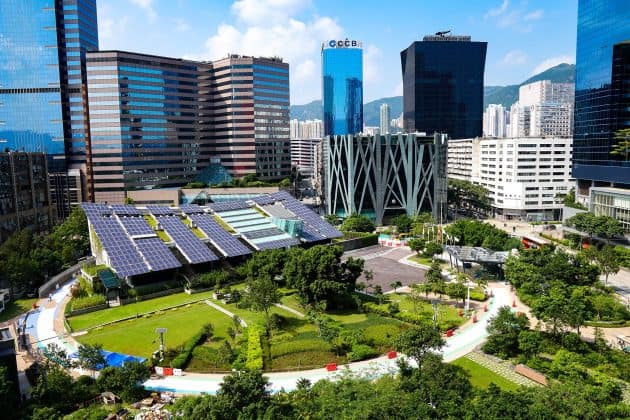

Investments in urbanization are expected to increase by 2035, and this provides opportunities for the integration of sustainable urban technologies within these investments, according to an expert at a Jan. 25 webinar on clean technologies by JETRO and J-Bridge.
Climate change has been at the forefront of discussions in recent times: developed countries at the 26th Conference of the Parties (COP26), for instance, pledged to reach their goal of delivering $100 billion to climate finance by 2023, while $187billion is also invested annually in urban climate finance in the East Asia and Pacific regions.
More than 70% of all carbon dioxide emissions is generated in urban environments, where over half of the world’s population (56.2%) already lives.
The overlap between urbanization and climate change needs to be as big as it gets, said Tony A. Verb, co-founder of Carbonless Asia, a decarbonization-focused innovation and investment platform.
“Whatever investments happen in the context of urbanization will be embedded for decades,” he said. “If we have a sustainable urban technology integrated into an urban development project, we will reap the benefits of that for decades to come. If it doesn’t happen, we lose an opportunity to apply more innovative, more efficient, more inclusive solutions — also for decades to come.”
Examples of green technologies include wastewater treatment, self-sufficient buildings, and solar energy systems.
Eighty-five percent of the technological solutions needed to hit net zero (or the balance between greenhouse gases released into the atmosphere and those that are taken out) are already in place, according to the International Energy Agency’s 2021 report.
“What is needed is to identify these technologies that can scale the fastest,” Mr. Verb told the webinar audience, noting the need to support entrepreneurs who have already been working to tackle specific challenges. “Give them the capital, give them the sales channels, and open the doors to help scale these technologies.”
In the Philippines, opportunities abound in infrastructure, such as the Metro Manila Subway Project under the administration’s Build, Build, Build program.
The kinds of technology that is used in the construction and operation of the metro line will define efficiencies in the coming decades for the country, said Mr. Verb.
“Propositioning this as a low-carbon technological development is our responsibility,” he said. “It’s our responsibility to work with the government to introduce and help scale these technologies.
If you like this article, share it on social media by clicking any of the icons below.
Or in case you haven’t subscribed yet to our newsletter, please click SUBSCRIBE so you won’t miss the daily real estate news updates delivered right to your Inbox.
The article was originally published in Business World and written by Patricia Mirasol.







More Stories
Vista Land Celebrates 50 Years with Sandiwa: An Event Honoring Leadership, Legacy, and the Filipino Dream of Homeownership
Vista Land Celebrates Love Month in Ilocos Region
Vista Land Bridges Cebuano Heritage and Progress with Valencia by Vista Estates